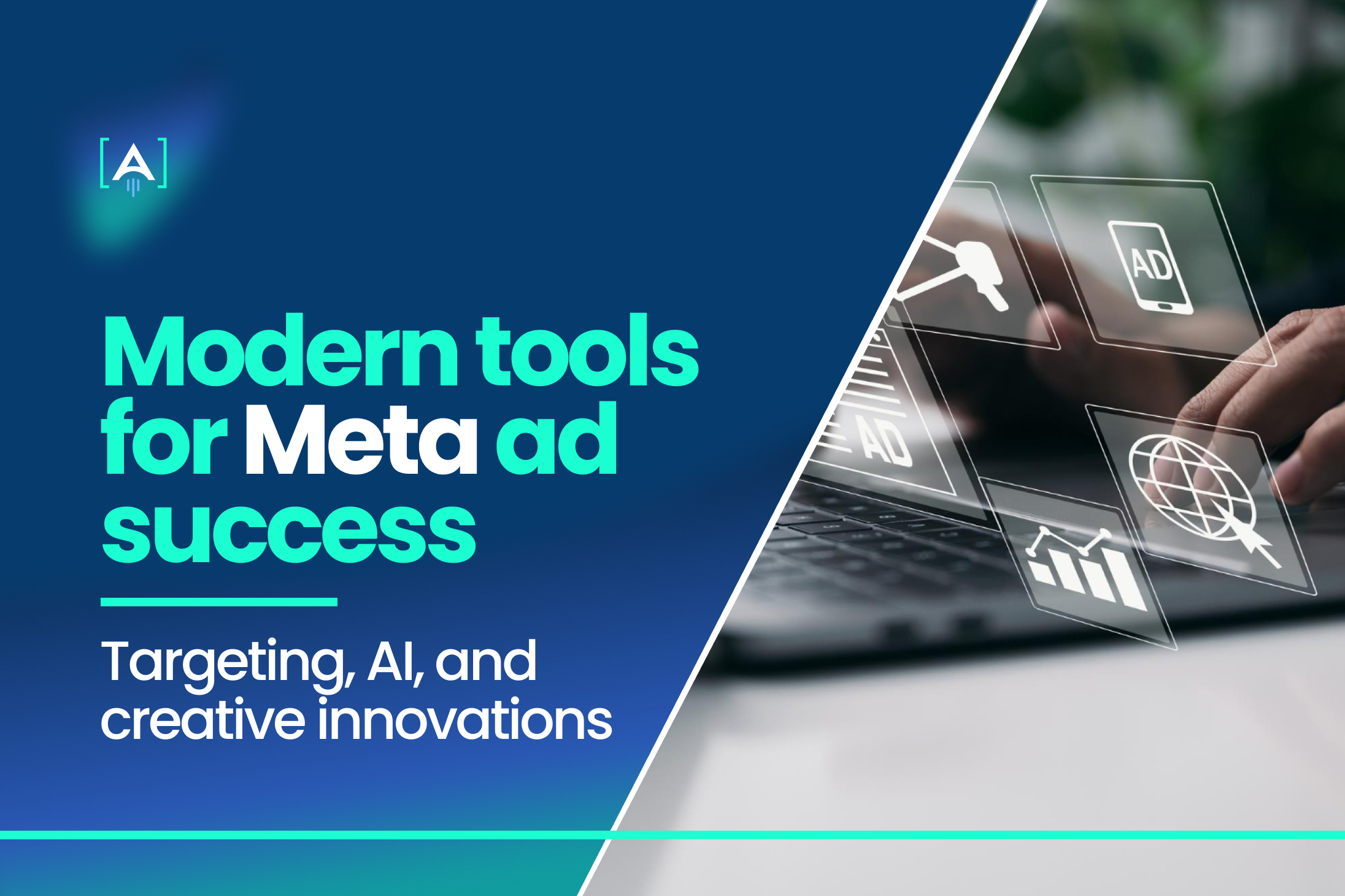Welcome to the ever-adapting world of ads! As you explore more, you’ll see how Meta tools can help grow your startup. Get ready as we go through a maze of modern tech and creative ideas to boost your ads.
First off, do you remember the days when placing an ad meant selecting a magazine or TV channel, paying a hefty sum, and praying that it reaches your potential customers? Yeah, those days are long gone, and we say good riddance!
Thanks to the world of advertising, startups and marketers like you have an arsenal of meta tools and strategies at your fingertips.
Here’s a snapshot of what we’ll be delving into:
- Unleashing the Power of Precise Targeting: You’ll see how precision in ad targeting can drastically improve your ad performance.
- Harnessing AI in Content and Ad Creation: We’ll take a peek at the tech behind the scenes, and how it’s revolutionizing advertising.
- Riding the Wave of Creative Innovations: Discover how you can make your ads stand out in the crowd.
- Turning Data into Ad Results: We’ll unravel the mystery behind data, showing you how to use it to improve your ads.
By the time we’re through, you’ll be well-equipped to navigate the world of Meta advertising like a pro!
Why should you pay attention to all this? Because advertising on Meta’s platforms, specifically Facebook and Instagram, isn’t just about throwing an image and catchy tagline out into the digital wild and hoping for the best.
No, it’s about strategy, it’s about targeting, and it’s about using cutting-edge technology to reach out to the right people, with the right message, at the right time.
Think of it as the difference between a flyer randomly dropped in mailboxes and a personal letter addressed directly to your potential customer. Which one do you think will have more impact? You guessed it!
As startup founders and growth marketers, you’re on a mission to grow and succeed. And in this digital age, effective advertising is a critical part of that mission.
A Facebook Ads Agency can help you refine your Meta ad strategy to make the most of these tools and techniques.
The Power of Precise Targeting

Think of your Meta ad campaign as a rocket ship. You’re the captain. You have a specific destination in mind – let’s call it Planet Success. Now, would you just launch your rocket without any coordinates?
Of course not! You’d take the time to enter precise directions into your navigation system, ensuring that your spacecraft is aimed exactly where it needs to go.
That’s the magic of precise targeting in Meta advertising. Let’s dig in.
The Importance of Targeting in Meta Advertising
One thing we’ve learned about digital advertising is that blanket strategies don’t cut it anymore. Imagine throwing a dart with a blindfold – you might hit the board, or you might not.
Targeting in Meta advertising is like removing the blindfold, allowing you to aim your dart accurately at the bullseye. It’s about using specific, data-driven strategies to ensure that your ads reach the people who are most likely to engage with them.
Now, let’s unwrap the advantages of precise targeting:
1. Reduced Ad Waste: Without targeting, your ad can end up in front of people who have zero interest in what you’re offering, and that’s just a waste of precious ad budget. Targeting ensures that every penny you spend is used to reach potential customers.
2. Higher Conversion Rates: When your ads reach the right audience, they’re more likely to convert. It’s as simple as that.
3. Better Customer Engagement: Targeted ads are more relevant to the viewer, and relevant ads engage. The more engaged your audience, the more likely they are to interact with your brand, and the higher the chances they’ll become loyal customers.
So, how does it work? In the Meta universe, you can utilize three primary targeting options: Custom Audiences, Lookalike Audiences, and Demographic targeting. We’ll be exploring each of these options in depth in the next section.
Picture your customer. Are they a young professional interested in tech gadgets, or a parent looking for educational apps for their kids? Do they live in a bustling city or a quiet suburb?
With Meta’s targeting options, you can narrow down your audience to such precise details, effectively turning your spray-and-pray advertising method into a laser-focused strategy.
Custom Audiences, Lookalike Audiences, and Demographic Targeting
In the universe of Meta advertising, targeting options are a bit like spices in a dish. The right combination can create something irresistible to your audience, but understanding what each spice does and how it works with others is crucial.
1. Custom Audiences
If you’ve been sailing the startup seas for a while now, you likely have a list of customers, website visitors, or folks who’ve interacted with your app or content. This group already has a connection with your business, and hence, they are more likely to engage with your ads. Meta allows you to target this bunch directly using a feature called Custom Audiences.
Essentially, a Custom Audience is a list of individuals who have already interacted with your business in some way. This list could come from various sources:
- Website Custom Audiences: These are customers who have visited your website or a specific webpage.
- App Activity Custom Audience: This group comprises individuals who’ve used your app or performed certain actions in it.
- Customer List Custom Audience: You can directly upload a list of contact info (like emails or phone numbers) from your CRM to Meta’s ad platform to target these individuals.
- Engagement Custom Audiences: This list includes individuals who have interacted with your content on Meta’s platforms.
Your Custom Audience can be as large as your entire customer base or as specific as people who’ve abandoned their carts on your online store. The best part? You can create up to 500 Custom Audiences per ad account. That’s 500 unique chances to reconnect with people who already know your business.
Remember, these customers have already shown an interest in what you offer, so a well-crafted ad can nudge them closer to conversion.
2. Lookalike Audiences
Now that you’ve warmed up to your existing audience, how about finding some new faces who might be equally interested in your business? Enter Lookalike Audiences.
Lookalike Audiences are, well, just what they sound like. They’re individuals who “look like” or share characteristics with your existing customers. To create a Lookalike Audience, Meta uses an existing Custom Audience and finds new people who share similar demographics, interests, and behaviors.
The beauty of this feature is you get to decide how closely you want your Lookalike Audience to mirror your Custom Audience. If you want a tight match, use a smaller percentage range. If you’re ready to cast a wider net, go for a larger percentage.
As a guideline, a source audience should have between 1,000 and 5,000 people. Remember, the quality of your audience matters too. If you select your top-engaging customers as your source audience, you’re likely to discover a higher-quality Lookalike Audience.
3. Demographic Targeting
Let’s say you’re launching a new coding bootcamp for women. Your ideal customer is a woman interested in tech and learning to code. With Demographic targeting, you can specifically aim your ads at this group.
Meta allows you to refine your audience based on age, gender, education, job title, interests, behavior, and much more. It’s like you’re building a ‘sketch’ of your ideal customer and then serving ads to people who fit this sketch.
Imagine you’re organizing a local farmers’ market. With demographic targeting, you can aim your ads at people in your city who have shown an interest in organic food and sustainable living.
The key here is understanding who your ideal customer is and using that information to target your ads.
In a nutshell, precise targeting in Meta advertising is like having a Swiss Army knife at your disposal. With Custom Audiences, you can engage with customers who already have a connection with your business. With Lookalike Audiences, you can discover new individuals who share similarities with your existing customers. And with Demographic Targeting, you can serve ads to the exact ‘type’ of people who are most likely to be interested in your business.
The Impact of AI in Content and Ad Creation
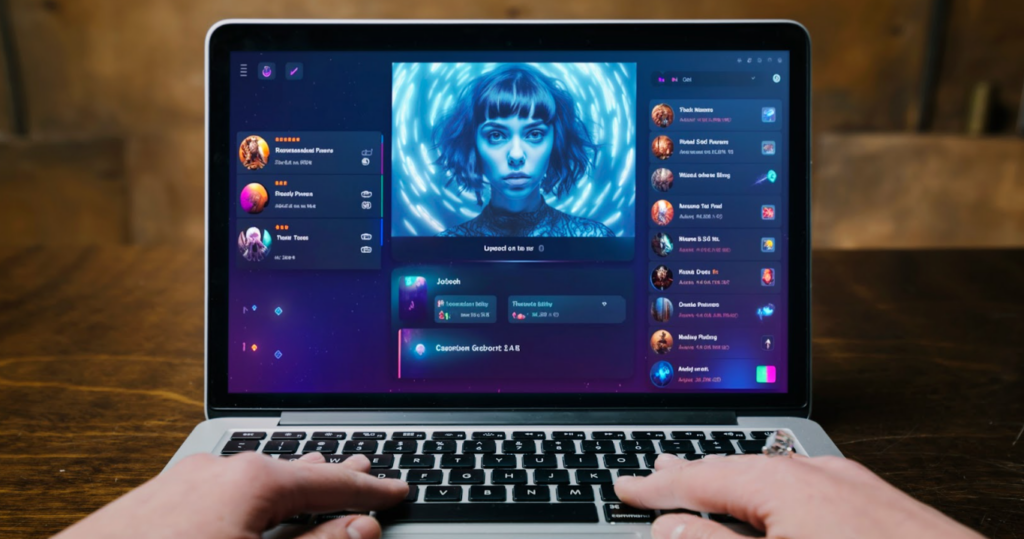
As we keep exploring, let’s encounter something that’s changing advertising: the fascinating world of Artificial Intelligence (AI).
AI in advertising is as accessible and user-friendly as a well-designed mobile app. It’s here to enhance our capabilities, not to dominate.
How AI is Revolutionizing Advertising
Imagine this: You’re baking a cake for the first time. You’ve got your apron on, ingredients spread across the kitchen counter, and a recipe that looks like it’s written in an alien language. As a first-timer, you’re confused and worried about making mistakes.
Now, picture a friendly, intelligent assistant by your side. This assistant has mastered the art of cake-baking. It guides you step-by-step, helps you avoid common mistakes, and even tweaks the recipe to suit your taste. This is what AI is to us in advertising.
But how exactly does AI add that special flavor to our advertising efforts? Here’s a simple, friendly breakdown:
1. Predicting Ad Performance: AI is like our friendly fortune teller. It can peek into the future and predict how well your ad might perform even before it goes live. This helps you to be more confident in your ad strategies right from the start.
2. Optimizing Ad Language: Ever wished for a magical editor that could make your ad copy more appealing? AI is that wish granted. It can analyze and suggest improvements to your ad language, making it more enticing to your audience.
3. Content Optimization: AI takes a deep look at your audience’s likes and dislikes. Like a good friend, it suggests content that your audience will love and engage with.
4. Automating Tasks: Let’s face it, we all love a little help with our chores. AI can take care of tasks like scheduling ads or generating reports, giving you more time for the fun parts – brainstorming, strategizing, and creating!
As startup founders and growth marketers, we are constantly learning, adapting, and growing. AI is our friendly companion, making our path smoother and our goals more achievable.
Overview of AI Tools and Their Uses
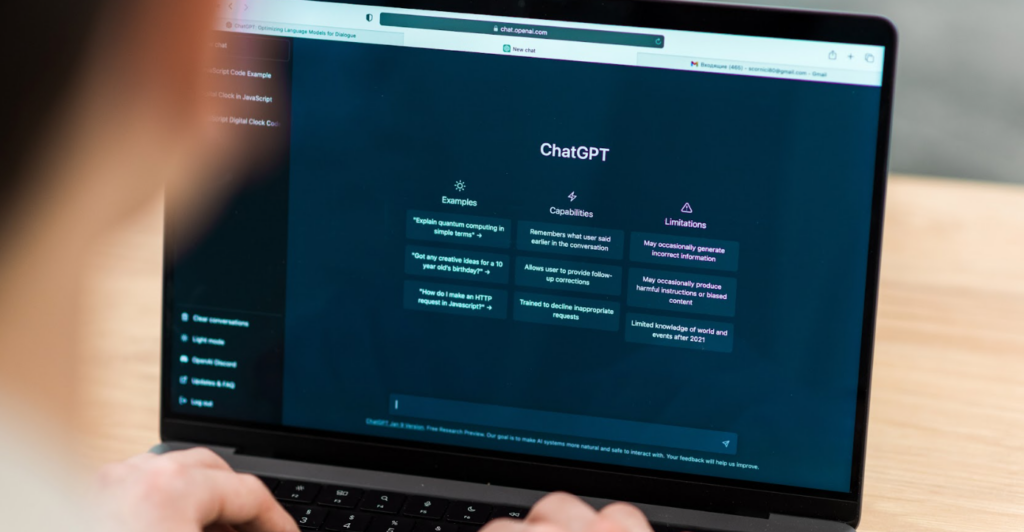
In the captivating world of Artificial Intelligence, there are a few standout tools that are making waves in the world of advertising.
We’ll take a walk through this AI toolbox, focusing on six prominent tools: ChatGPT, Jasper, Midjourney, Stable Diffusion, Adobe Firefly, and Canva AI. Each has its unique flair and capabilities, allowing us to supercharge our ad content like never before.
1. ChatGPT
ChatGPT is an intelligent buddy developed by OpenAI, adept at generating creative text. Need catchy ad copy? ChatGPT is your go-to. Need an engaging blog post? ChatGPT has got you covered. From translating languages to crafting various types of content, this tool is like having an eloquent wordsmith in your team who never runs out of innovative ideas. Moreover, it can also answer queries informatively, making it a great tool for crafting FAQs or engaging with audiences in real-time.
2. Jasper
Another linguistic genius in our toolkit, Jasper. Similar to ChatGPT but with a unique creative flair, Jasper is great in producing diverse text formats, be it a gripping script, a poetic piece, or an informative email. Just give Jasper a brief, and watch as it whips up engaging content to captivate your audience.
3. Midjourney
Jumping from the domain of text to visuals, we have Midjourney. This AI image generator is your personal Picasso. It turns text prompts into stunning images – from lifelike landscapes to abstract art. Midjourney can generate a wide range of visuals that could be the showstoppers in your ad campaigns.
4. Stable Diffusion
If Midjourney is Picasso, Stable Diffusion is your dependable, high-quality print house. It uses AI to generate images that are consistently high-quality and less likely to be blurry or distorted. This tool ensures that the visuals in your ad campaigns always maintain their sharpness and consistency.
5. Adobe Firefly
The world of advertising recognizes Adobe for its suite of design tools, and Adobe Firefly takes it up a notch. This web-based AI image generator creates visuals from text prompts that align with Adobe’s design aesthetic. From vibrant banners to captivating ad visuals, Firefly adds the Adobe spark to your campaigns.
6. Canva AI
Canva has been a go-to tool for many marketers for its user-friendly design interface. Canva AI, integrated within the platform, takes this experience a step further. It generates images from text prompts, allowing you to create or enhance visuals that are consistent with your brand style and engaging to your audience.
So, how can these tools supercharge your Meta ad campaigns?
- ChatGPT and Jasper can help you craft compelling ad copy, tailored to your audience’s language preferences. They can also create long-form content to support your campaigns, such as engaging blog posts or informative landing pages.
- Midjourney and Stable Diffusion are your allies for creating eye-catching visuals. They can produce an array of images that will capture your audience’s attention and align with your brand identity.
- Adobe Firefly and Canva AI provide a platform to create, enhance, and customize visuals as per your campaign needs. Whether you need a static image, an animated graphic, or a visual overhaul of existing content, these tools have your back.
AI tools in advertising are like a handy multi-tool – each tool serving a distinct purpose but working in harmony to deliver a result that’s greater than the sum of its parts.
As startup founders and growth marketers, these AI tools are our secret weapons to create engaging, effective, and powerful Meta ad campaigns.
Predicting Ad Performance
Ever wish you had a crystal ball to gaze into the future of your ad campaigns? Well, guess what? AI gives you the next best thing! Using AI, you can predict ad performance, allowing you to make strategic decisions based on data, not just gut feelings. But how does this work, and why is it so revolutionary? Let’s find out!
Predicting ad performance with AI is a bit like a weather forecast. Meteorologists use data and models to predict whether it’s going to rain or shine tomorrow.
Similarly, AI uses historical data and machine learning models to forecast how your ads are likely to perform. It’s like having your personal weatherman, except it’s predicting ad outcomes instead of tomorrow’s weather!
But why should you care about this? Three words: Time, Money, Efficiency. Predicting ad performance can help you:
- Save Time: By giving you an idea of how your ad is likely to perform, AI allows you to make quick decisions about whether to launch the ad, tweak it, or go back to the drawing board.
- Save Money: Predicting ad performance can prevent you from spending money on ads that are likely to underperform. Instead, you can focus your budget on ads that are predicted to do well.
- Increase Efficiency: By identifying potential underperformers early, you can pivot and try a new approach, thereby improving your overall ad strategy’s effectiveness.
Now that we’ve established the “why,” let’s delve into the “how.” How does AI predict ad performance? There are several factors it considers, such as:
- Historical Performance: AI looks at how similar ads have performed in the past. If your new ad is similar to one that did well previously, AI might predict high performance.
- Audience Data: The AI analyzes your target audience’s behavior, interests, and engagement history to predict how they’ll respond to your ad.
- Ad Elements: The AI also looks at the ad’s elements – text, images, call-to-action, etc. It evaluates how these elements have influenced performance in past ads to predict the new ad’s outcome.
Let’s imagine you’re launching a new ad campaign for your tech startup. Your product is an innovative home automation system. You’ve previously advertised similar products that were well-received by a specific age group, say 25 to 35-year-olds, and featured a certain style of graphics and language.
Given this historical data and audience behavior, AI can predict whether your new campaign will hit the mark or if you need to fine-tune your approach.
Another way to leverage AI for predicting performance is A/B testing. Suppose you have two ad versions and can’t decide which one to go with. AI can help! By running both versions simultaneously to a small audience, AI can predict which one is likely to perform better based on initial engagement rates.
Keep in mind, though, that AI is not 100% foolproof (just like our weather forecast). While it can provide valuable insights and predictions, it doesn’t guarantee results. It’s essential to continually monitor your ads, take AI predictions into account but also trust your instincts and business acumen.
Optimizing Ad Language
If advertising is an art, ad language is the palette of colors we use to paint our masterpiece. But how often do we stop and ask ourselves, “Are we choosing the right colors?”
This is where AI steps in, offering a fresh set of eyes and a bucket full of insights to optimize our ad language.
Imagine this scenario: You’re about to tell a joke. You have two versions – one is long-winded with a lot of buildup, and the other is short and punchy. Which one is more likely to get the laugh?
To answer this, you’d likely consider your audience – perhaps the long version would work at a standup gig, but in a casual chat, the shorter one would be a hit. AI works in much the same way when it comes to optimizing ad language.
Here are a few ways AI can work its magic on your ad language:
1. Know Your Audience: Just like a good comedian, AI studies the audience. It considers their language preference, slangs, popular phrases, emoticons, etc., to make the ad language more relatable and engaging.
2. Perfecting the Tone: Based on your brand identity and the audience, AI can suggest whether a formal, casual, humorous, or inspirational tone will work best.
3. Crafting Compelling CTAs: A call-to-action (CTA) can make or break your ad. AI can suggest CTAs that are proven to be effective, like “Sign up for free trial” or “Shop now and get 20% off!”
4. Personalizing Language: AI can help tailor the language based on user data, resulting in a more personalized and engaging ad.
5. Testing & Learning: AI can also use A/B testing to learn which language works best and use these insights to optimize future ads.
To understand how this works, let’s consider an example. Your tech startup is launching a new product, and you’re crafting a Meta ad for it. You’ve drafted the ad copy, but you’re not quite sure if it will resonate with your audience.
Enter AI. By analyzing your audience’s language preferences and your previous ads’ performance, AI might suggest that your ad copy is a bit too technical for the target audience. Perhaps it suggests using simpler language or a more conversational tone.
Next, it might find that your CTA – “Procure our solution today” – is a little stiff and impersonal. It could recommend something more casual and actionable, like “Get your hands on our new gadget today!”
It might also suggest personalizing the ad based on user data. For instance, if you’re targeting current users of your other products, the ad could say, “As a loyal user of our XYZ gadget, you’re going to love our new product!”
Finally, AI will A/B test these recommendations, see which ones get the best response, and use these learnings to continually optimize your ad language.
Remember, the goal here is not to have AI write your ads for you but to use its insights to make your language more engaging and effective. You’re still the artist, and AI is like your helpful assistant, passing you the colors it thinks will work best on your canvas.
In essence, optimizing ad language with AI is all about speaking your audience’s language and resonating with them on a deeper level.
Content Optimization Based on Audience Preference
Content optimization and audience preference – the dynamic duo of successful advertising! If our audience is the judge, then the content is our performance.
The better it resonates with the audience, the higher our scores. But how do we ensure our performance hits the right notes? That’s where our backstage hero, AI, comes into play. Let’s break it down.
Unmasking Audience Preference
Before we can optimize our content, we first need to understand what our audience likes. Picture this: You’re throwing a dinner party. Wouldn’t you want to know your guests’ food preferences before deciding the menu? Of course, you would! The same principle applies to content creation.
Now, you might be thinking, “That sounds great, but how do I figure out what my audience prefers?” Here’s how AI can help:
- Analyzing Engagement: AI can evaluate which of your past posts had high engagement. Did your audience prefer video content or image-based posts? Did they engage more with infographics or blog posts?
- Studying Audience Interactions: AI can also study your audience’s interactions across Meta platforms. What types of posts are they liking, sharing, or commenting on? What content are they posting on their pages?
- Monitoring Trends: AI can keep an eye on trending topics and formats you provide. It can alert you if a particular content format is gaining popularity among your target audience.
With this valuable insight, you’re now ready to optimize your content based on your audience preference.
Content Optimization Tips and Tricks
As you read through these tips, imagine AI standing by your side, guiding and assisting you:
1. Choose the Right Format: If AI analysis shows that your audience loves video content, why not create more of it? On the other hand, if they engage more with image posts, focus on those. Your content format should align with what your audience prefers.
2. Speak Their Language: AI can also provide insights into the language style your audience prefers. Are they more receptive to a formal tone or casual lingo? Do they appreciate humor or prefer straight-to-the-point information? Your content should speak the language your audience understands and enjoys.
3. Personalize Content: AI can use user data to suggest personalization opportunities. For example, it might recommend segmenting your audience and creating tailored content for each group.
4. Test, Learn, Repeat: Remember, content optimization is an ongoing process. Use AI to continuously monitor your content performance, learn from it, and adjust your strategy accordingly.
Think of content optimization as a performance. Your audience’s applause guides your next act. With AI as your director, you’ll have real-time insights into what your audience wants, helping you put on a show they’ll love.
Creative Innovations in Meta Ads
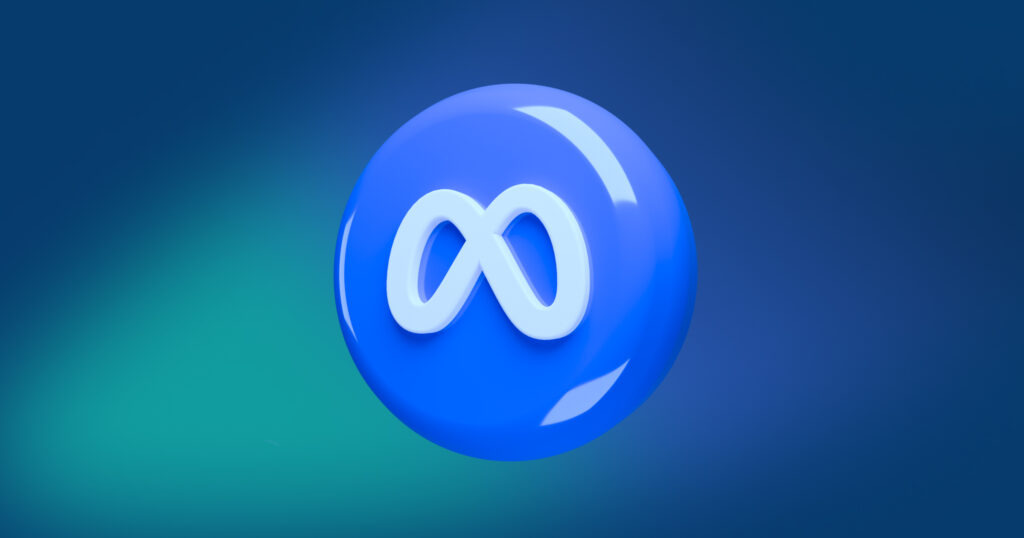
As we continue our exploration, we now stand at the intersection of creativity and innovation. They’re not just buzzwords, folks. They’re the lifeblood of successful Meta advertising.
With Facebook ads tools, creativity knows no bounds. From dynamic creatives to advanced targeting, these innovations are especially beneficial for B2B companies looking to make a strong impression in a competitive market.
How Creativity Plays a Crucial Role in Ad Success
So, why is creativity such a game-changer in Meta ads? To answer that, let’s step into the shoes of our audience. They’re scrolling through their Meta feeds, and they’re seeing a ton of ads.
If your ad doesn’t have that spark of creativity, it’ll just blend into the sea of sameness. But, if it’s creative, it stands out, catches their attention, and makes them stop, look, and engage.
The best part? Creativity doesn’t have to mean complex. Often, it’s the simple, relatable ideas that have the most impact. Here’s how creativity boosts your ad success:
- Grabs Attention: An innovative, creative ad breaks the monotony and piques the interest of the audience.
- Engages the Audience: Once it has their attention, a creative ad keeps them engaged with compelling visuals, clever copy, or an interesting narrative.
- Promotes Brand Recall: A uniquely creative ad leaves a lasting impression, making your brand more memorable.
- Encourages Action: Finally, a creative ad motivates the audience to take action, be it liking, sharing, commenting, or clicking on the call-to-action.
Imagine you’re advertising your new coffee brand on Meta. A plain ad with a photo of your product and a “Buy Now” button may go unnoticed. But what if your ad showed a GIF of a sleepy person turning into a superhero after a sip of your coffee? Now, that’s an ad people will stop and watch!
As startup founders and growth marketers, creativity is our secret sauce in making our ads stand out. So, let’s keep those creative juices flowing and put our best (and most creative) foot forward in our Meta ads.
Exploring New Ad Frmats
Sometimes, one image or video isn’t enough. This is where Carousel, Slideshow, and Canvas ads come into play. Think of them as your creative gallery on Meta platforms. Let’s explore these formats and see how they can enhance your ad creativity.
1. Carousel Ads
Carousel Ads are like a merry-go-round of your products or services. They allow you to showcase up to 10 images or videos, each with its own link, in a single ad. But why are they so effective? Here’s why:
- Tell a Story: Carousel Ads let you create a narrative around your products or services. You can tell a story that unfolds as the user scrolls through the carousel.
- Highlight Multiple Products: Have a range of products? Showcase them all in a single Carousel Ad, each with its unique link leading to its purchase page.
- Deep-Dive into One Product: Have one main product? Use the multiple cards to highlight different features or benefits of a single product.
Let’s say you’re a fitness startup offering a range of home workout gear. A Carousel Ad could feature your top-selling products, each with a short description and a “Shop Now” button leading directly to the product page.
2. Slideshow Ads
Slideshow Ads are a simple way to create short video ads from a series of still photos, text, or existing video clips. They’re lightweight, easy to create, and play well even on slow internet connections. Here’s why Slideshow Ads are a win:
- Easy & Affordable: Creating a high-quality video ad can be time-consuming and costly. With Slideshow Ads, you can create video-like ads using images, making it easy and cost-effective.
- Engage with Motion: Slideshow Ads allow you to add a touch of motion to your ads, making them more eye-catching and engaging than static images.
For instance, if you’re launching a new line of organic skincare products, you can create a Slideshow Ad showcasing the products, their ingredients, and their benefits, creating an engaging story for your audience.
3. Canvas Ads (Instant Experiences)
Canvas Ads, now known as Instant Experiences, are full-screen, mobile-optimized ads that load almost instantly. They offer an immersive experience for your audience, and here’s why they’re a big hit:
- Interactive: Canvas Ads are not just ads; they’re experiences. Users can swipe through a carousel of images, tilt the image in different directions, and even zoom in for a closer look.
- Highly Customizable: You can combine images, videos, carousels, text, and call-to-action buttons to create a Canvas Ad that tells your brand story in a creative, engaging way.
Let’s say you’re a travel startup. You could create a Canvas Ad for a popular destination, featuring stunning images, short videos, and text highlighting the top attractions, all leading to a “Book Now” button.
How Dynamic Creative Optimizes Ad Elements
Dynamic creative is a feature on Meta’s Ad platform that automatically generates high-performing combinations of your ad components. Think of it as a puzzle master who takes various pieces (your ad elements) and creates the most appealing picture (your final ad) for every individual in your audience.
Here’s how it works:
- You Provide the Elements: You upload a set of ad components – headlines, images, videos, descriptions, CTAs, etc.
- Dynamic Creative Does Its Magic: Dynamic creative takes these elements and creates a unique combination for each person based on what it predicts they’ll respond to.
- The Result: Your audience sees a personalized, optimized ad that’s more likely to engage them.
Why is dynamic creative a big deal? Here are a few reasons:
- Maximizes Efficiency: Instead of manually creating multiple ad variants, dynamic creative does the heavy lifting for you.
- Optimizes Ad Performance: By tailoring each ad to the viewer’s preferences, dynamic creative increases the likelihood of engagement, conversion, and overall ad success.
- Provides Valuable Insights: Dynamic creative also gives you insights into which combinations perform best, helping you learn about your audience’s preferences.
To put this into perspective, let’s consider an example. Suppose you’re a fashion startup launching a new line of eco-friendly clothing. You’ve got several potential headlines, images featuring different items, a few description options, and several CTAs.
Now, you could spend hours creating multiple ads to test different combinations. Or, you could use dynamic creative. Simply feed all your elements into the system, and it automatically creates ads, showing different combinations to different viewers based on their predicted preferences.
Perhaps one viewer sees an ad featuring your eco-friendly T-shirt with a headline about sustainability, while another viewer sees an ad for your eco-friendly jeans with a headline about style and a different CTA. Without lifting a finger, you’ve personalized your ad for each viewer.
But remember, while dynamic creative is powerful, it doesn’t replace the need for thoughtful, high-quality ad elements.
It’s a tool that amplifies your creativity and fine-tunes your approach, but the creativity and strategic thinking – well, that’s all you, my friends!
Harnessing Data for Better Ad Results
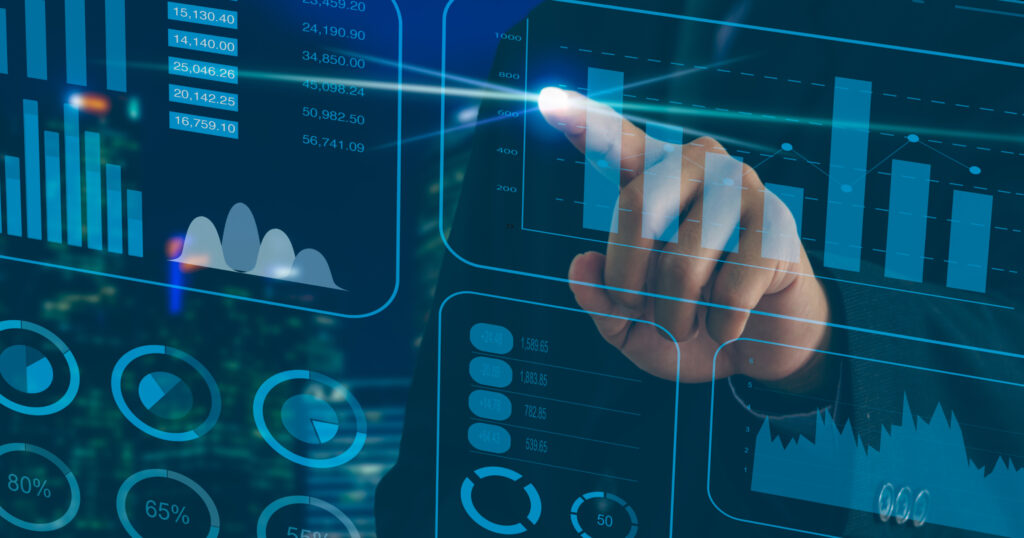
As we venture further into the world of Meta advertising, there’s one companion that we, as startup founders and growth marketers, should always have by our side: data.
It’s like having a compass in the wilderness, a lighthouse on a stormy sea, a GPS on a winding road. It guides our decisions, shows us the way forward, and helps us steer clear of pitfalls.
Importance of Data in Meta Advertising
In the world of Meta advertising, data isn’t just important – it’s indispensable. It’s the bridge between guessing and knowing, between assumption and insight, between chance and strategy. But why is data such a game-changer? Here’s why:
1. Understanding Your Audience: Data helps you know your audience better. Their demographics, interests, behaviors, the kind of content they interact with – all of these invaluable insights come from data. Knowing your audience means you can tailor your ads to resonate with them.
2. Improving Ad Performance: Data can tell you which of your ads are working and which are not. You can see which ads drive the most engagement, which ones lead to conversions, and which ones fall flat. This helps you optimize your current and future ads.
3. Guiding Your Strategy: Data doesn’t just look at the past; it also helps predict the future. It can forecast trends, predict performance, and guide your overall Meta advertising strategy.
4. Maximizing ROI: By helping you target the right audience, create effective ads, and refine your strategy, data ultimately helps you get the most bang for your advertising buck.
Think of it like this: You’re a chef trying to create a dish that your customers will love. Data is like feedback from your customers – it tells you which ingredients they like, how they prefer their food cooked, and even what they don’t like. Armed with this knowledge, you can create a dish (or, in our case, an ad) that they’ll enjoy.
However, data is only as good as what you do with it. Gathering data without analyzing and acting on it is like having a map but not using it to navigate. As we move forward, we’ll look at various data analysis tools that can help you harness the power of data for better ad results.
Meta Insights for Post Engagement and Audience Data
Peeking into the world of Meta advertising, we encounter a tool that provides invaluable insights into your posts’ performance – Meta Insights. Imagine having a personal advisor who monitors your posts, gauges their success, and points out areas of improvement. That’s Meta Insights for you!
The Power of Meta Insights
Meta Insights tracks various metrics like reach, engagement, and click-through rate, giving you a comprehensive understanding of how your posts are performing. But how do you get there? All you need is a Meta Business Suite account.
Here’s a closer look at why Meta Insights is a game-changer:
- Performance Tracking: You can track your posts’ performance over time, giving you insight into what’s working and what’s not. It’s like a performance report for your posts.
- Competition Analysis: You can compare your posts’ performance with other businesses or creators, giving you a benchmark.
- Post Optimization: Insights gained from the tool can be used to optimize your posts for better results.
But remember, data is only as valuable as the actions taken based on it. Meta Insights is an amazing resource, but it’s up to us to leverage this data to craft more impactful posts.
Supercharging Post Engagement with Meta Insights
Imagine you’re an eco-friendly fashion brand. You’ve been posting regularly but want to take your engagement to the next level. How can Meta Insights help? Here’s a step-by-step guide:
- Quality Over Quantity: High-quality content is key. Use Meta Insights to see which posts are getting the most engagement. Do they have a common theme or format? Use these insights to craft more similar high-quality posts.
- Visual Appeal Matters: Meta Insights can tell you if posts with images or videos perform better. Use this data to incorporate more of these elements into your future posts.
- Harness the Power of Hashtags: Look at which hashtags are associated with your high-performing posts. Include these in your future posts to reach a broader audience.
- Engage with Contests and Giveaways: If your contests and giveaways get high engagement, consider doing them more frequently. Meta Insights can show you what prizes your audience loves the most.
- Promote Across Channels: Don’t limit your posts to Meta platforms. Promote them on your website, emails, or other social media platforms. Meta Insights can tell you which cross-promotion gets the most traffic.
To wrap up, Meta Insights is a powerful tool that offers data-driven insights to fine-tune your Meta posts. It gives you the ‘what,’ but the ‘how’ is up to you. Use this tool to understand your posts’ performance, learn from the data, and create more engaging content.
Meta Ads Manager for Creating & Managing Ads
When you’re navigating the waters of Meta advertising, it’s critical to have the right Meta tools in your toolbox. One of the most effective Meta tools that is essential for any startup founder or growth marketer is Meta Ads Manager.
Picture it like your personal assistant in the realm of advertising. It’s there to help you create, manage, and track your ad campaigns across Facebook, Instagram, Messenger, and Audience Network.
Unpacking the Meta Ads Manager
Meta Ads Manager is like a Swiss army knife for advertisers – packed with numerous features. Let’s break down some of these and see how they contribute to the advertising process:
- Campaign Creation: You can create campaigns based on various objectives – reach, conversions, or awareness.
- Ad Creation: The tool allows you to create ads in multiple formats – text, images, videos, or carousels.
- Targeting: You can target ads to specific audiences based on demographics, interests, and behavior.
- Reporting: The tool provides detailed performance reports.
The beauty of Meta Ads Manager lies in its versatility. Regardless of your marketing goals – increasing reach, boosting brand awareness, driving website traffic, generating leads, or enhancing sales, Meta Ads Manager is there to help.
Reaping the Benefits of Meta Ads Manager
Utilizing Meta Ads Manager can be a game-changer for your advertising strategy. Here’s why:
- Reach a Wider Audience: Meta Ads Manager enables you to reach an audience that’s specific to your business.
- Increase Brand Awareness: With targeted ads, you raise awareness among people who are likely to be interested in your products or services.
- Drive Traffic to Your Website: By showcasing engaging ads to the right people, you can drive more traffic to your website.
- Generate Leads & Increase Sales: Targeted, appealing ads can help you generate leads and increase sales.
But how do we get the most out of Meta Ads Manager?
Maximizing Meta Ads Manager
Here are some tips to fully harness the power of Meta Ads Manager:
- Set Clear Goals: Before you begin, clarify your campaign goals.
- Define Your Audience: Who are you trying to reach? Defining your audience demographics, interests, and behaviors.
- Craft Effective Ads: Create ads that are relevant and compelling to your audience.
- Track Your Results: Keep an eye on your campaign results to understand what works and what doesn’t.
By integrating Facebook ads automation with Meta tools, you can streamline ad management, enhance campaign efficiency, and achieve better results.
Meta Creative Hub to Create High-Quality Ad Creative
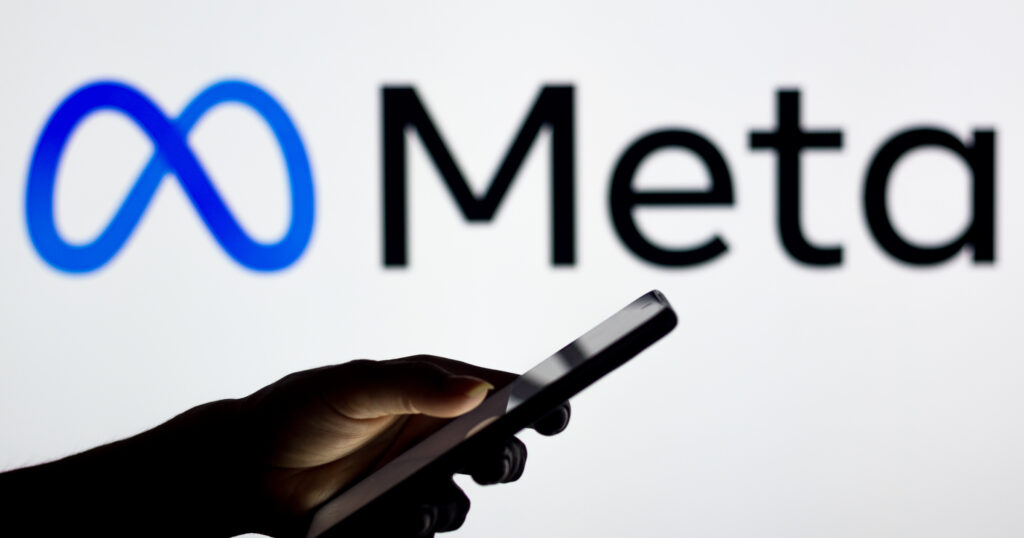
Creating effective and engaging ad creatives is like trying to put together a delicious meal. You need the right ingredients, the right recipe, and the right tools. Meta Creative Hub is one of the most essential Meta tools for ad creatives in the realm of advertising.
What is Meta Creative Hub?
Meta Creative Hub is like the Masterchef of advertising tools, designed to whip up sumptuous ad creatives. It’s a collaborative platform that enables businesses to share, review and build ad ideas, mockups, and final creatives with their teams and clients in a secure environment.
It’s as if you have a virtual brainstorming room where your team can toss around ideas, experiment, refine, and finalize ad creatives.
Here’s a peek into its key features:
- A Library of Templates: Meta Creative Hub boasts a vast library of templates that you can use as a starting point for your ad creatives.
- Mockup Creation Tool: This tool lets you create mockups of your ad creatives.
- Creative Review Tool: Here’s a tool that facilitates creative reviews with team members and clients.
- Creative Sharing Tool: Once your creative is ready, you can share it with your team members and clients.
The Benefits of Meta Creative Hub
Meta Creative Hub offers multiple benefits for startups and growth marketers:
- Secure Collaboration: Collaborate on ad creatives without worrying about data compromise.
- Effective Ad Creatives: The platform’s features facilitate the creation of impactful ad creatives.
- Time Saving: With everything you need in one place, you save time that would be spent coordinating across different platforms.
- Improved Communication: The platform facilitates better communication, ensuring everyone is on the same page regarding the final creative.
With Meta Creative Hub, ad creation becomes a streamlined and efficient process.
AdEspresso for Ad Creation and Optimization
Ever heard of AdEspresso? It is a magic wand that every startup founder and growth marketer needs to have in their toolkit. This advertising management platform is like the secret recipe to creating, managing, and optimizing your Facebook and Instagram ad campaigns.
AdEspresso – Your Personal Ad Chef
If you’ve been struggling with the overwhelming world of Meta advertising, AdEspresso is the sous-chef you’ve been waiting for. Its comprehensive suite of features will help you whip up your ad campaigns.
- Campaign Creation: Define the objectives of your campaigns, such as reach, conversions, and awareness, using Meta tools provided by AdEspresso.
- Ad Creation: The platform offers various ad formats including text, images, videos, and carousels.
- Targeting: It helps you target your ads based on demographics, interests, and behavior, ensuring your ads reach the right crowd.
- Reporting: AdEspresso’s detailed reporting helps you understand the performance of your campaigns and what’s resonating with your audience.
- Split Testing: It also lets you split test your ads to identify the winning formula.
- Optimization: The platform’s optimization features allow you to tweak your campaigns for better results.
The Perks of AdEspresso
AdEspresso brings several advantages to your marketing table:
- Efficient Ad Creation: With tools to create compelling ads, AdEspresso is like your personal creative agency.
- Time-Saving: No more juggling between platforms, manage your Facebook and Instagram ad campaigns from a single place, freeing up your precious time.
- Performance Improvement: The platform’s reporting and optimization tools help you refine your campaigns and amplify your results.
- Guidance: Stuck with something? AdEspresso’s got your back with a host of resources including documentation, tutorials, and customer support.
AdEspresso isn’t just another tool; it’s your companion in the Meta advertising journey, making the complex process of ad creation and management a piece of cake with the help of advanced Meta tools.
Leveraging Instagram within Your Meta Ad Strategy

Okay, hold your hats, startup founders and growth marketers because we’re about to dive into the vibrant world of Instagram, specifically Instagram Stories and Reels. In the past couple of years, these two features have swiftly risen to fame, becoming key tools for marketers to engage their audience and amplify their reach on the platform.,
The Importance of Instagram Stories and Reels
Instagram Stories, launched back in 2016, was Instagram’s answer to Snapchat’s ephemeral content. And boy, did it take off! Stories are short snippets of video or photo content that vanish after 24 hours. They’re like the tantalizing appetizers on your marketing menu that leave your audience craving for more.
Then came Instagram Reels in 2020, Instagram’s timely response to the TikTok phenomenon. These 15 to 60-second multi-clip videos allow brands to express creativity, showcase products, or simply connect with their audience in an engaging, fun-filled way. Think of Reels as the mouthwatering main course in your content feast, a dish that can’t be ignored.
The Growing Significance of Stories and Reels
As a brand, why should you care about Instagram Stories and Reels? Here’s why:
- Reach and Engagement: Stories and Reels are viewed by millions of users daily. They offer a terrific opportunity to tap into a massive, engaged audience.
- Flexibility: With the range of stickers, filters, and editing tools, you can make your content as informative, fun, or engaging as you want.
- Discoverability: Instagram promotes Reels on the Explore page, giving your brand a chance to be discovered by new audiences.
- Authenticity: These features allow for spontaneous, less-polished content that humanizes your brand and fosters authentic connections with your audience.
- Website Traffic: Using swipe-up links in Stories (if you have more than 10k followers) or CTAs in Reels, you can drive significant traffic to your website.
How to Leverage Stories and Reels in Your Meta Ad Strategy
So, how do you incorporate these mighty tools into your Meta ad strategy?
- Show Behind-the-Scenes: Use Stories to give your audience a sneak peek into your business operations, team, or production process. This not only builds trust but also makes your audience feel like a part of your journey.
- Product Showcases: Use Reels to showcase your products or services in action. Highlight their features, benefits, or even share user testimonials.
- Educational Content: Share tips, hacks, or how-to guides related to your product or industry. Not only is this valuable for your audience, but it also positions your brand as an authority.
- Engage with Your Audience: Use interactive stickers like polls, quizzes, or Q&A in Stories to directly engage with your audience. This feedback can be invaluable!
- Cross-Promotion: Promote your stories as ads or share your best-performing Reels on other social media platforms for increased reach.
In the dynamic world of social media, Instagram Stories and Reels are revolutionizing how brands communicate with their audience.
Tools for Creating Instagram-Friendly Content
Let’s get our hands on some handy tools to make your Instagram content pop. We are focusing on three popular tools, InShot for video editing, Mojo for creating animated Stories, and Canva for designing Reels content. Each of these tools is a little goldmine for content creators, and here’s why:
1. InShot for Video Editing
Ever wondered how people get their videos so crisp and catchy on Instagram? Meet InShot, the magic wand for video editing on your smartphone. InShot is a user-friendly app that helps you enhance your videos with a wide array of features:
- Trim and Crop: Get rid of unnecessary parts and focus on the best moments.
- Music and Sound Effects: Amplify the mood with fitting audio.
- Text and Stickers: Add an element of fun or provide critical information.
- Video Speed Control: Create cool slow-mo’s or quick highlights.
- Export in Various Formats: Whether it’s MP4 for your feed or GIF for your stories, InShot has got you covered.
2. Mojo for Creating Animated Stories
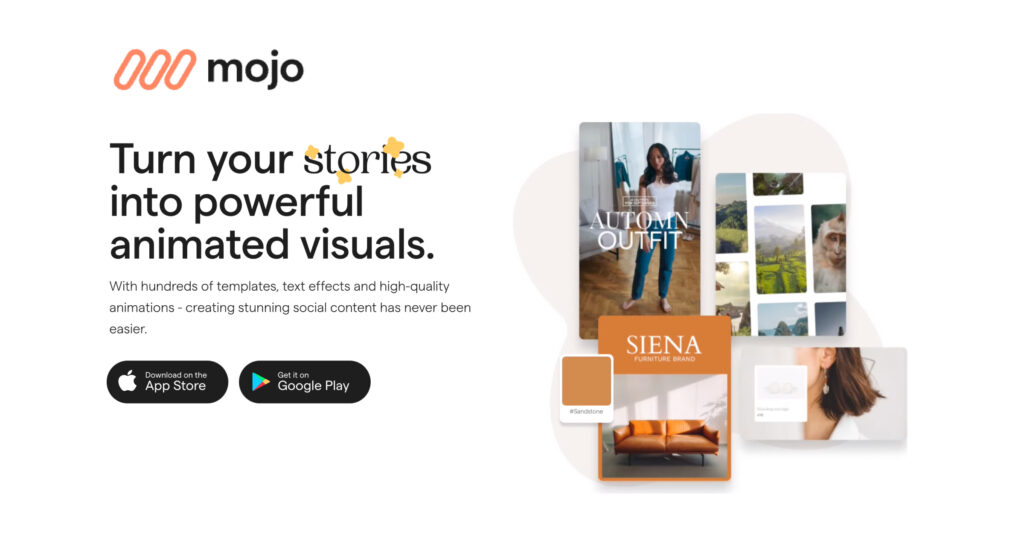
Next up is Mojo, the secret to those enticing animated Instagram Stories that you’ve been admiring. Here’s what Mojo brings to the table:
- Templates: No need to start from scratch. Pick a template that matches your style.
- Customization Tools: Add text, stickers, or music to your stories.
- Export Option: Once done, export your animated Stories and share them directly on Instagram.
3. Canva for Designing Reels Content
Last but definitely not least, we have Canva, the all-rounder design platform that’s a favorite of many businesses and individual creators. When it comes to designing content for Instagram Reels, Canva is a game-changer:
- Design Templates: Choose from a vast library of templates perfect for Reels.
- Design Tools: Add text, images, or shapes to make your content stand out.
- Collaboration Features: Working in a team? No problem! Collaborate on designs seamlessly.
- Export Options: Done designing? Export your graphics in your preferred format and upload them to Instagram.
So, those are our three star players in the Instagram content creation field.
To get the most out of them, here are a few bonus tips:
- Quality Matters: High-quality images and videos give your content a professional edge.
- Keep it Short and Sweet: Captivate your audience’s attention with brief, straightforward content.
- Eye-Catching Elements: Use bold text and striking graphics to make an impact.
- Spread the Word: Share your content on other platforms to amplify its reach.
No matter whether you’re just starting your Instagram journey or looking to level up your game, these tools and tips should come in handy.
Tools We Use for Ad Creative and Content
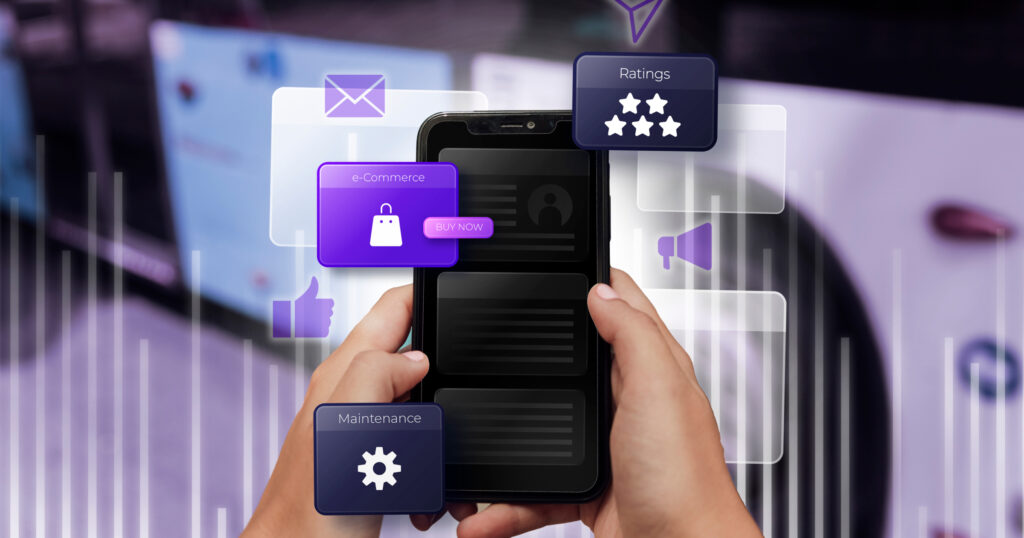
When it comes to creating impactful and engaging advertisements, the right Meta tools can make all the difference. In the ever-evolving world of digital marketing, we use an array of innovative Meta tools for ad creative and content production.
Adobe Spark for Quick Video Creation
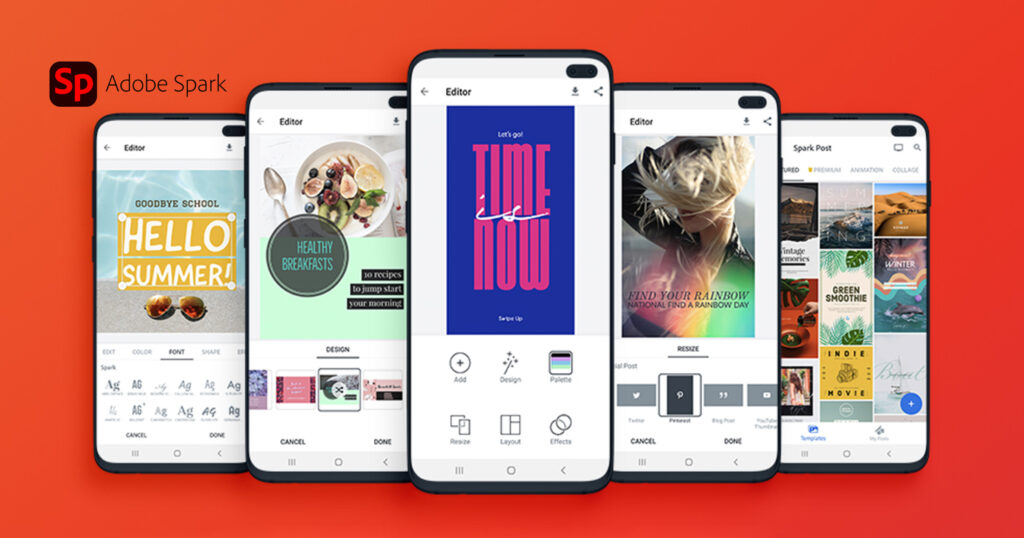
Adobe Spark, your ticket to creating captivating videos, presentations, and social graphics without any fuss. An easy-to-use, web-based design tool, Adobe Spark is the go-to choice for businesses and individuals aiming to create high-quality content without the intricacies of professional video editing software.
Adobe Spark – What’s Inside?
Unveiling Adobe Spark’s treasure trove:
- Templates: Adobe Spark offers an extensive library of professionally designed templates for videos, presentations, and social graphics. Just pick a template and get started.
- Design Tools: Adobe Spark provides various tools to personalize your content, including text, images, shapes, filters, effects, and animations. No more cookie-cutter designs.
- Collaboration: Adobe Spark understands that teamwork makes the dream work. It allows you to collaborate on your creations with others, fostering teamwork and collective creativity.
- Export Options: Once your masterpiece is ready, Adobe Spark enables you to export it in diverse formats such as MP4, GIF, and PNG.
Now, let’s discover how to leverage Adobe Spark for creating spellbinding videos.
Creating Impressive Videos with Adobe Spark
Here are some tips to help you craft stellar videos:
- Narrative Matters: Every great video starts with a compelling story. Identify the core message you want to convey and weave a narrative around it.
- Quality Above All: Employ high-quality images and videos to lend a professional look to your creation. Low-quality media can instantly dilute the impact.
- Short and Sweet: Keep it brief and impactful. Remember, less is more in the digital age where attention spans are dwindling.
- Eye-catching Text and Graphics: Make use of vibrant text and graphics to grab attention and keep viewers hooked.
- Promote Your Video: Don’t let your video collect dust. Share it far and wide on social media and other platforms.
Adobe Spark in Action
Here are some practical ways to utilize Adobe Spark:
- Product Demos: Use Adobe Spark to create engaging product demos that highlight the unique features and benefits of your product.
- How-to Videos: Break down complex processes into simple, digestible how-to videos.
- Promotional Videos: Craft captivating promotional videos to elevate your brand or product.
- Personal Videos: From birthday videos to wedding films, Adobe Spark helps you add a touch of personalization to all your special occasion videos.
In essence, Adobe Spark empowers you to produce engaging videos without needing extensive technical knowledge or advanced design skills.
Animoto for Slideshow and Video Creation
Introducing Animoto, a cloud-based video editing platform that simplifies the process of creating captivating slideshows and videos. Whether you are a business aiming to engage your audience or an individual wishing to make a memorable personal video, Animoto has got your back.
Unraveling the Features of Animoto
What makes Animoto a crowd-pleaser? Let’s dive in:
- Template Library: Animoto provides a vast array of professional templates for creating standout slideshows and videos. Just select a template and you’re on your way.
- Design Tools: Animoto houses numerous tools for personalizing your creations, such as text overlays, images, music, filters, effects, and animations. Crafting bespoke content has never been easier.
- Collaboration: Animoto facilitates collaboration, letting you create and edit videos together with your team or clients, enhancing productivity and creativity.
- Export Flexibility: Once you’re satisfied with your project, you can export it in various formats including MP4, GIF, and PNG, catering to diverse content requirements.
Now, let’s explore some tips on leveraging Animoto for crafting engaging slideshows and videos.
Crafting Masterpieces with Animoto
Here’s your guide to creating spellbinding content:
- Weave a Story: Every great video or slideshow starts with a compelling story. Identify what your content should communicate and construct a narrative around it.
- Quality First: Use high-quality images and videos to ensure your content looks professional and captivating.
- Brevity is Key: Keep your content succinct and compelling. Remember, less is often more in the fast-paced digital world.
- Text and Graphics: Incorporate captivating text and graphics to grab attention and encourage viewers to watch your content.
Animoto is an all-in-one tool that empowers you to create visually stunning slideshows and videos without needing to learn complex video editing software.
Tips for Selecting the Right Tools for Your Business
When it comes to running a startup or managing the growth of your business, choosing the right tools is critical to your success.
Whether it’s for ad creation, ads management, customer relations, or ads data analysis, selecting the right tools can streamline your operations, improve productivity, and ultimately, boost your bottom line.
Here are some tips to guide you on this journey:
1. Identify Your Needs
First and foremost, you need to identify what your business needs. What tasks do you need to accomplish? What problems do you need to solve? What processes can be automated? The answers to these questions will help guide your selection process.
2. Evaluate Your Budget
Every tool comes with a cost. Some tools require a one-time purchase, while others work on a subscription basis. Evaluate your budget and decide how much you can afford to spend on these tools. Remember, the most expensive tool is not always the best. Look for tools that offer a good balance between cost and features.
3. Consider Ease of Use
The best tools are those that you and your team can use easily and intuitively. If a tool is too complicated, it can create more problems than it solves. Consider the learning curve and the level of technical expertise required to use the tool effectively.
4. Check Compatibility
Check if the tool you’re considering is compatible with the systems and software your business is already using. The more compatible a tool is with your existing setup, the easier it will be to integrate and use.
5. Look for Scalability
Your business is growing, and you want tools that can grow with you. Look for scalable solutions that can handle increasing amounts of work and complexity as your business expands.
6. Read Reviews and Testimonials
Check what other users have to say about the tool. User reviews and testimonials can provide valuable insights into a tool’s strengths and weaknesses.
7. Take Advantage of Free Trials
Many tools offer free trials. Use these to test out the tool’s features and see if it suits your business needs before making a purchase.
8. Check for Support and Training
Good tools come with excellent customer support and training resources. These will help you get the most out of the tool and resolve any issues that may arise.
9. Consider the Future
Finally, think about the future. What are your plans for your business in the next few years? Choose tools that not only meet your current needs but will also be useful as your business evolves.
Remember, the tools are there to help you, not to add complications. Choose wisely, and they’ll serve as a solid backbone for your business operations, helping you drive growth and success.
Sailing towards Success: Harnessing the Power of Ad Tools

So, we’ve embarked on this thrilling journey, unwrapping the magic behind the robust tools for Instagram and Facebook ad success.
You’ve seen how precise targeting, the role of Artificial Intelligence (AI), creative innovations, and the clever use of data can supercharge your Instagram and Facebook ad campaign results. Let’s capture the essence of this expedition!
Precision is Power: Remember, Instagram and Facebook ad targeting strategy plays a pivotal role. Meta’s targeting options, such as Instagram and Facebook custom audiences, your Lookalike Audience, and Demographic targeting, are like a compass guiding your Instagram and Facebook ads to the right audience. They help ensure your message reaches your Instagram and Facebook users who need to hear it.
Target users effectively by using the right blend of strategies. As a captain, your first job is to reach the right people. Any Instagram and Facebook ads campaign is only as good as its ability to reach the right people. Hence, the importance of understanding your Instagram and Facebook target audience cannot be overstated.
AI – The Unseen Ally: AI, with tools like ChatGPT, Jasper, Midjourney, or Stable Diffusion, is revolutionizing the ad industry. They’re like the crew members on our ship, silently optimizing our journey – predicting Instagram and Facebook ad targeting options, optimizing language, and tailoring content to Instagram and Facebook target audience-based preferences.
Let Creativity be Your Sail: The wind that propels your ship is creativity. Meta’s ad formats – Carousel, Slideshow, and Canvas ads, give you a playground to let your creative side loose. Dynamic creative optimizes ad elements, giving each viewer a tailored experience.
Data – The Treasure Trove: In the Meta advertising landscape, data is your treasure trove. It guides you, helps you make informed decisions. Tools like Facebook ads manager, Meta Insights, Meta Audience Insights, or Meta Creative Hub, are your treasure maps, leading you to better engagement, refined target audiences, and optimized ads.
For instance, creating a custom audience based on the interactions with your website or app, allows you to target people who have shown interest in your product or service.
Instagram – An Uncharted Island: Instagram Stories and Reels are like newly discovered islands teeming with potential customers. Using tools like InShot, Mojo, and Canva can make these lands easier to navigate.
Remember, the power to shape your business’s future lies in your hands. You’re the captain of your ship, navigating through the vast ocean of Meta advertising.
Additionally, to navigate the complexities of B2B advertising, harnessing the right Facebook ads B2B tools is crucial.
So, it’s time to set sail. Unleash the power of these modern tools, steer your ship towards growth and success, and make a splash in the bustling sea of the market.
Don’t just ride the waves of change – make them. Take the helm, and let’s set sail toward the horizon of success!
Now go forth and conquer!
